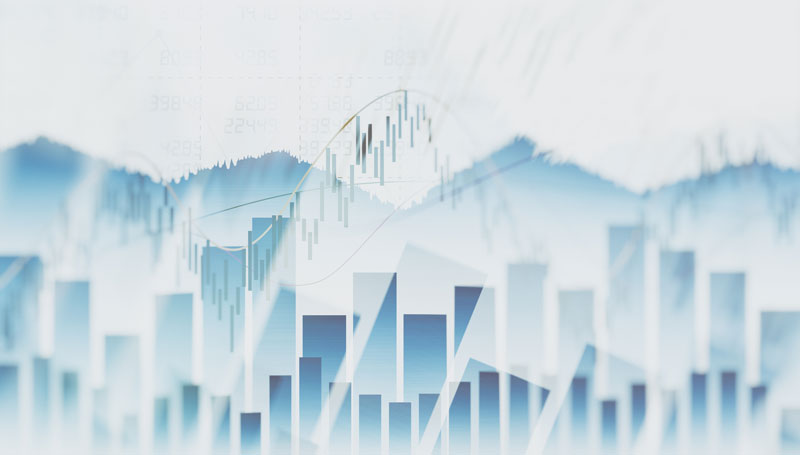
17.04.2020 – Special Report. The People’s Republic of China has introduced a network for its own cyber currency. And immediately afterwards, it established the first digital currency on the globe – the CBDC. This raises the question of whether this will boost the use of cyber-currencies worldwide and give them the long-awaited official accolade. Or whether China will one day turn off the tap on Bitcoin, Ethereum and co.
World premiere: Network for electronic central bank money
On Wednesday, April 15, 2020, the People’s Republic of China launched the Blockchain Service Network (BSN). Initially, the network is to operate only in China, but later it will also provide international access. In this way, Beijing wants to make it easier for companies and software developers to develop blockchain-based applications under state leadership. The step supports payment options via the Messenger WeChat, cloud payments, but also enterprise online banking and offline bank transfers. Coindesk.com explained that the network is to go global on April 25. The “BTC-Echo” commented that Beijing is thus expanding its position – after all, China is the country with the most blockchain patents worldwide. “IEEE.Spectrum” added that by the end of 2020, nodes are to be built in 200 Chinese cities.
Starting signal for the Digital Yuan / CBDC
Yesterday, April 16, the first cybercurrency was launched: The “BTC Echo” reported, citing “Chinastarmarket”, that China had initially implemented the CBDC (central bank digital currency) on a small scale via Alipay. The digital central bank digital currency is to be used in the Xiangcheng district in the city of Suzhou, west of Shanghai, for the payroll of government officials. From May onwards, the government then plans to further expand the payouts. The Bank of China, the China Construction Bank, the Industrial and Commerical Bank of China and the Agricultural Bank of China worked together on this pilot project. Referring to Exchange Binance, Coinkurier.de wrote that there are already official apps for testing the cryptocurrency, also known as “Digital Yuan” or “DC/EP” (Digital Currency/Electronic Payment).
You shall have no other currency beside mine
Investors apparently saw the development as positive for the digital currency universe – Bitcoin, for example, rose by around 10 percent since Wednesday night. If that isn’t a misconception. Cryptocurrencies like Bitcoin continue to be used in China, although they are officially banned, explained “IEEE.Spectrum”. We think: Not for long. Because the Chinese will not allow the crypto-miner, which is kept under state custody, to cheat, meaning that they will be allowed to produce other digital currencies in addition to Chinese central bank money.
The fact that the Communist Party will, if need be, go over dead bodies is proven by the Corona crisis – Beijing has long concealed the outbreak and, according to reports in the “Washington Post”, the “Epoch Times” and Fox News, apparently actually let the virus escape from the laboratory of the Wuhan Institute of Virology. In addition, China has also put the World Health Organization (WHO) on the alert – its head Tedros Adhanom Ghebreyesus always praised the Chinese approach, suppressed warnings from Taiwan in December 2019, criticized the early border closures in the US, Israel and Poland. No wonder: He is a communist and has made a career as a cadre of the Tigray People’s Liberation Front. What we do not read on the German Wikipedia, but we do read on the American.
The bridge to the market for cryptos: The world must prepare itself for the merciless eradication of competing e-foreign currencies – for the Chinese CP it is a matter of a lot of money and imperial interests.
China wants the leading role
One reason for China’s blockchain rush is the pursuit of global leadership in cyber foreign exchange. One motivation for the new cryptonetwork is probably that China wants to learn quickly. With its low costs of probably the equivalent of $300 per year at minimum, the BSN network is likely to absorb an enormous amount of knowledge, as it will attract many hard-working students. This in order to prevent a monopoly by Facebook, for example. And to become the world’s number one in cryptos in the long term. “China has the ambition to be the technology leader in the world. And I think they might have enough technology chops to pull this off, at least within the blockchain industry,” Edith Yeung continued on Coindesk.
Attack on the dollar
Another reason is the power behind a global reserve currency. If the digital yuan grows and prospers, China may at some point try to switch its international trade to the yuan – Beijing will simply dictate this to smaller neighboring countries or, as in the case of the WHO, use infiltrated international organizations to its advantage. If the Chinese have so many blockchain patents that they would have a monopoly on cryptos, the other digital currencies will dry up. The advantages: A strong yuan would support the Chinese middle class because of its greater purchasing power. This would also weaken the dollar as a global trading currency. And this simply means a loss of power for the US – which would then have a problem with high arms expenditure financed on credit and the protection of Taiwan.
Fight against corruption
However, the most important reason for the introduction of the digital yuan is the horrendous corruption in the Middle Kingdom. Of course, accurate figures are difficult to obtain. But in June 2011, Time magazine reported on a sensational report by the People’s Bank of China. The central bank, in turn, referred to the Chinese Academy of Social Sciences: According to this report, since 1990, around 18,000 cadres of the Communist Party, state authorities, the judiciary, or higher management had fled the country. And they took about 120 billion dollars with them.
In October 2014, a case in China caused a sensation: According to the BBC, around 200 million yuan – at that time the equivalent of 33 million dollars – were found in Wei Pengyuan’s apartment. The man was the deputy head of the coal department at the National Energy Agency. In the first nine months of 2014 alone, according to the report, 13,000 officials were convicted of corruption in China. Another pretty case is that of Zhang Qi, a former Communist party leader in Haikou, Hainan province. According to the “Daily Mail” he was arrested for corruption in September 2019. At his home he found about half a ton of gold; and in the bank, another 35 million dollars in cash.
Total control
Well, too bad: If these big boys didn’t have to hide their money at home or in a state-controlled bank, they probably wouldn’t have been caught. And that’s where the cryptos come in. Edith Yeung, Managing Partner at Proof of Capital, a venture capital firm focused on block chaining, drew this conclusion in an interview with Coindesk: “If the government has access to everything via handpicked nodes, everything is developed and maintained by the government, no more cash. It’s hard to have any fraud if all telco, banks, transportation, Alipay or WeChat is part of the government network.
Long or short?
Our conclusion: competing cryptos are likely to disappear from China sooner or later. Which cuts off a large chunk of the demand. If other countries follow the Chinese example, things are likely to look bleak for cybercurrencies globally as well. Turkey has plans for a digital lira, in the US Libra is being looked at critically by Facebook, and in Germany the discussions about abolishing cash are not silenced.
However, it may take some time to implement all these plans. The question is whether China is at all capable of building a completely controlled network. Another long factor would be the fact that the world’s central banks, especially in the wake of the Corona crisis, are once again merrily gutting the domestic currencies with a flood of freshly printed money. But many investors are longing for a currency that cannot be inflated by (monetary) policy – for electronic gold, so to speak. And then there is the issue of halving at Bitcoin.
The Bernstein Bank wishes you successful trades and many good investments!
Important Notes on This Publication:
The content of this publication is for general information purposes only. In this context, it is neither an individual investment recommendation or advice nor an offer to purchase or sell securities or other financial products. The content in question and all the information contained therein do not in any way replace individual investor- or investment-oriented advice. No reliable forecast or indication for the future is possible with respect to any presentation or information on the present or past performance of the relevant underlying assets. All information and data presented in this publication are based on reliable sources. However, Bernstein Bank does not guarantee that the information and data contained in this publication is up-to-date, correct and complete. Securities traded on the financial markets are subject to price fluctuations. A contract for difference (CFD) is also a financial instrument with leverage effect. Against this backdrop, CFD trading involves a high risk up to the point of total loss and may not be suitable for all investors. Therefore, make sure that you have fully understood all the correlating risks. If necessary, ask for independent advice.

















